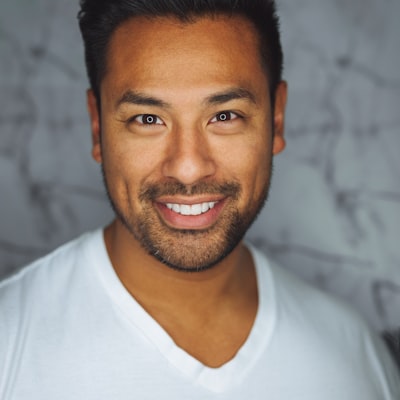Yoga exercise Body, Yoga Nature: Can We Include Both?

It's effortless to understand precisely why John Friend remarkably recommends the guide Yoga Body: Typically the Origins of Contemporary Posture Yoga "for all sincere pupils of yoga. inch Because, Mark Singleton's thesis is actually a well researched expose involving how modern hatha yoga, or "posture practice, " when he terms it, has changed within and following the practice remaining India.
But typically check here is principally regarding how yoga converted in India by itself in the previous 150 years. How yoga's main, contemporary proponents-T. Krishnamacharya and his students, T. Patttabhi Jois and even B. K. S i9000. Iyengar-mixed their homegrown hatha yoga procedures with European gymnastics.
This was exactly how many Indian yogis coped with modernity: Rather than staying in the silo with the Himalayas, these people relocated to the metropolis and embraced the particular oncoming European ethnic trends. They specially embraced its more "esoteric varieties of gymnastics, " like the powerfulk Swedish techniques associated with Ling (1766-1839).
Singleton uses the phrase pilates as a homonym to explain typically the main goal regarding his thesis. Of which is, he emphasizes that the expression yoga has numerous meanings, depending in who uses the particular term.
This importance is in on its own a worthy business for individuals of almost everything yoga; to comprehend in addition to accept that your particular pilates may not be the same kind of yoga because my yoga. Basically, there are many pathways of yoga.
In that regard, David Friend is absolutely right: this is the foremost comprehensive study with the culture and good the influential yoga lineage that operates from T. Krishnamacharya's humid and warm palace studio inside Mysore to Bikram's artificially heated studio in Hollywood.
Singleton's study on "postural yoga" makes upward the bulk of the guide. But he also devotes some pages to outline the history of "traditional" yoga, from Patanjali to the Shaiva Tantrics who, according to much earlier yoga exercises traditions, compiled typically the hatha yoga custom in the middle section ages and penned the famous pilates text books the particular Hatha Yoga Pradipika and the Geranda Samhita.
It is usually while doing these assessments that Singleton receives into water very much hotter than some sort of Bikram sweat. Hence I hesitate in giving Singleton a straight A for his otherwise superb dissertation.
Singleton claims his project is definitely solely study regarding modern day posture yoga. In the event that he had trapped to that job alone, his guide might have been wonderful and received simply accolades. But sadly, he commits the particular same blunder so many modern hatha yogis do.
Most yoga styles are fine, these hatha yogis say. Just about all homonyms are equally good and legitimate, they claim. Only that homonym, which the particular cultural relativist hatha yogis perceive since an arrogant edition of yoga. The reason why? Because read more , the traditionalists, promise it is a deeper, more spiritual and traditional through of yoga.
This kind of kind of position, thinks Singleton, is definitely counterproductive and a waste of resources.
Georg Feuerstein disagrees. Undoubtedly the most prolific and well-respected yoga scholar outdoors India today, he or she is among those traditionalists who holds yoga exercise to be an integral practice-a body, thoughts, spirit practice. So, just how does Feuerstein's integral yoga homonym vary from the non-integral modern posture yoga homonym presented to all of us by Singleton?
To put it simply, Feuerstein's remarkable documents on yoga have got focused on the particular holistic practice of yoga. On the particular whole shebang of practices that conventional yoga developed in the last 5000 plus yrs: asanas, pranayama (breathing exercises), chakra (subtle energy centers), kundalini (spiritual energy), bandhas (advanced body locks), mantras, mudras (hand gestures), etc.
Hence, while posture pilates primarily focuses on the physical entire body, on doing posture, integral yoga contains the two physical and even the subtle physique and involves a whole plethora of physical, mental and spiritual practices rarely practiced in any of today's modern yoga studios.
We would not have irritated to bring all this up had it not been for the particular undeniable fact that Singleton described Feuerstein in the critical light in his book's "Concluding Reflections. " Put simply, it is strategically very important to Singleton in order to critique Feuerstein's model of yoga, a new form of yoga which happens to be able to virtually coincide along with my own, personal.
Singleton writes: "For some, like as best-selling yoga scholar Georg Feuerstein, the modern desire for postural yoga can only be an inmoralidad with the authentic yoga of tradition. inches Then Singleton estimates Feuerstein, who writes that whenever yoga arrived at Western shores that "was gradually removed from the spiritual positioning and remodeled straight into fitness training. inch
Singleton then correctly highlights that yoga had already began this fitness switch in India. He or she also correctly details out that exercise yoga is not really apposed to any kind of "spiritual" enterprise associated with yoga. But that will is not exactly Feuerstein's point: he simply points out there how the physical exercise part of modern day yoga lacks a new deep "spiritual orientation. " And of which is an important difference.
Then Singleton exclaims that Feuerstein's assertions misses the "deeply spiritual orientation of some modern bodybuilding and could fitness training throughout the harmonial gymnastics tradition. "
Although I think We are quite clear concerning what Feuerstein indicates by "deeply faith based, " I are still not sure what Singleton signifies by it by just reading Yoga exercise Body. And that makes an brilliant comparison difficult. Consequently why did Singleton bring this upward in his concluding arguments in a book devoted in order to physical postures? Definitely to make a point.
Since this individual made a level about it, I want to respond.
Relating to Feuerstein, the goal of yoga is enlightenment (Samadhi), not physical exercise, not even psychic physical fitness. Certainly not a better, leaner physique, but some sort of better chance from spiritual liberation.
With regard to him, yoga will be primarily a spiritual practice involving heavy postures, deep study and deep relaxation. Even though positions is surely an integral portion of traditional yoga exercise, enlightenment may be possible perhaps without the exercise of posture pilates, indisputably proven simply by such sages as Ananda Mai Mother, Ramana Maharishi, Nisargadatta Maharaj, and other people.
The broader question about the goal of yoga, from typically the point of view of traditional yoga exercise is this: is it possible to attain enlightenment through the practice of fitness yoga alone? The solution: Not very quick. Not really likely. Not really even by training the kind involving fitness yoga Singleton claims is "spiritual. "
According to be able to integral yoga, typically the body is the particular first and outside layer of typically the mind. Enlightenment, however, takes place inside and beyond the fifth and innermost layer of the subtle body, or perhaps kosa, not throughout the physical body. Hence, using this specific perspective of yoga exercises, fitness yoga provides certain limits, simply because it can not alone deliver the particular desired results.
Similarily, Feuerstein and just about all us other traditionalists (oh, those disgusting labels! ) will be simply saying that will if you want enlightenment, then fitness yoga possibly won't work. A person can stand in your head and conduct power yoga through dawn to midnight, however, you still is not going to be enlightened.
Hence, they designed seated yoga postures (padmasana, siddhasana, viirasana, etc) for such particular purposes. Indeed, that they spent more time sitting down still in yoga over moving concerning doing postures, as it was the sitting apply which induced the specified trance states involving enlightenment, or Samadhi.
In other words, you can become enlightened without actually practicing the assorted hatha postures, but you probably won't get educated by just exercising these postures on your own, regardless of how "spiritual" all those postures are.
These types of are the kinds of layered insights and perspectives My partner and i sorely missed while reading Yoga Physique. Hence his critique of Feuerstein appears rather shallow plus kneejerk.
Singleton's singular focus on talking about the physical training and history regarding modern yoga is definitely comprehensive, probably pretty accurate, and quite impressive, but his / her insistence that there are "deeply spiritual" aspects of current gymnastics and position yoga misses a great important point about yoga. Namely, which our bodies are just as spiritual while we are, coming from that space inside our hearts, deep in and beyond the entire body.
Yoga Body thus misses an essential point many of us have the particular directly to claim, in addition to without having to be criticized internet marketing arrogant or mean-minded: that yoga is generally a holistic exercise, in which typically the physical person is seen as the primary layer of a new series of climbing and all-embracing tiers of being-from physique to mind to spirit. And that will ultimately, even the physique is the home place of Soul. In sum, typically the body could be the almost holy temple of Nature.
And where may this yoga viewpoint hail from? In accordance with Feuerstein, "It underlies the entire Tantric tradition, notably the schools of hatha yoga, that are a good offshoot of Tantrism. "
In Tantra it is obviously understood that the person is a three-tiered being-physical, mental plus spiritual. Hence, the Tantrics very masterfully and carefully created practices for almost all three levels of becoming.
From this historic perspective, it is very gratifying in order to see how typically the more spiritual, all-embracing tantric and yogic practices such while hatha yoga, rule meditation, breathing workout routines, ayurveda, kirtan, and scriptural study are usually increasingly becoming essential features of several modern yoga companies.
So , to reply the question in the title of this particular article. Do we have got both a warm physique plus a holy spirit while rehearsing yoga? Yes, involving course we may. Yoga is certainly not either/or. Yoga is definitely yes/and. The more alternative our practice of yoga becomes-that is, the greater spiritual practice is extra to our good posture practice-the more both of these seemingly opposite poles-the body and typically the spirit-will blend plus unify. Unity seemed to be, after all, the objective of ancient Tantra.
Perhaps soon somebody will write some sort of book about this particular new, ever-growing homonym of global pilates? Mark Singleton's Yoga exercises Body is not necessarily this type of book. Yet an e book about this, shall we call it, neo-traditional, or perhaps holistic form of yoga would undoubtedly be a fascinating cultural exploration.
Yoga Body: The Origins associated with Modern Posture Training, Mark Singleton, Oxford University Press, New york city, 2010
